New Habits, New Hobbies, Close Connections: How Wildcats Got Through the Pandemic
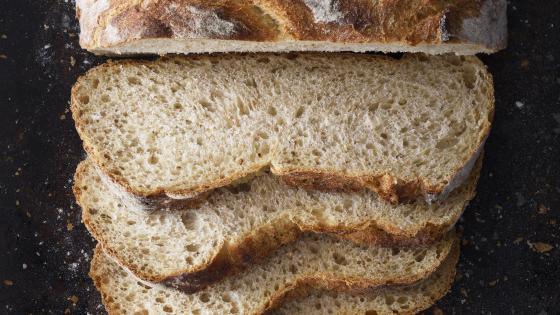
Every night since the world closed its doors and sent us home, isolated from one another and afraid, John Zimmerman has called his 91-year-old mother, Joan, to read her a bedtime story.
Zimmerman, the husband of Jane Zimmerman, the John and Ruth McGee Director of the Dean Rusk International Studies Program at Davidson College, bridges the distance between them with magazine articles, books and even Joan’s mother’s treasured memoirs.
“For as long as I’ve known her, my mother-in-law becomes choked up with love, affection and grief when remembering her mom,” Jane says.
The Zimmermans certainly aren’t alone—Wildcats across the globe adopted new habits and rituals to muddle through the grief and anxiety that was 2020. They discovered ways to cope with reality and find happiness in a world that seemed to be starving of it.
Some of you rekindled old friendships forged at Davidson, scheduling weekly Zoom movie nights. Some of you bought a Peloton. Some of you painted.
A lot of you prayed.
This is just a sampling of the things you did during 2020 to feed your soul.
Sue McAvoy ’77
My experience was fueled by my realization that we were suffering from two pandemics, COVID-19 and systemic racism. Like so many people, following the murder of George Floyd, I acknowledged my education gap when it came to most everything related to the Black experience in our country. And it occurred to me that I could use the extra time that COVID-19 precautions afforded me to engage myself in learning about the other pandemic. I started by participating in a 30-day antiracist challenge crafted by family members and continued by joining a Sacred Ground circle at my downtown Atlanta Episcopal church (Sacred Ground is the Episcopal Church’s 10-part, film- and reading-based discussion series; the curriculum confronts the historical roots of systemic racism and examines how that history still shapes American institutions and social interactions today). The next chapter was a Lenten book study ministry where I served as administrative lead for a partnership between Ebenezer Baptist Church (Dr. King’s church) and my church, St. Luke’s Episcopal, in reading Isabel Wilkerson’s Caste: The Origins of Our Discontents. Our eight-week Zoom ministry attracted 250–260 people weekly from all over the world and was highlighted by a session in which Ms. Wilkerson joined us and responded to our questions. Next for me is likely joining with my brothers and sisters at Ebenezer in advocacy work.
By the time this article appears, I hope that we are on the other side of the COVID emergency and are continuing to make strides towards dismantling systemic racism. The moral arc of the universe bends toward justice, but it’s our responsibility to bend the arc. And I’m grateful that I had the opportunity to fashion a lemonade of systemic racism self-education out of the COVID-19 lemons that were presented to us all.
Tim Chartier, Professor of Mathematics
I have done a lot of writing. I finished my book X Games in Mathematics, which demonstrates how working sports analytics trains you in various fields of mathematics.
I’ve also been working on a book on how to use sports analytics to recognize when an unforgettable moment happens in sports. It has cartoon illustrations and will come out at the end of 2021 or beginning of 2022—and yes, one of those examples is Steph Curry’s shooting.
William “Bill” Hagen ’63
One of the things that I did during 2020—apart from reading, playing tennis, and buying from Amazon—was to write a monthly column for the local newspaper, pretty much on whatever subject I chose (unpaid of course).
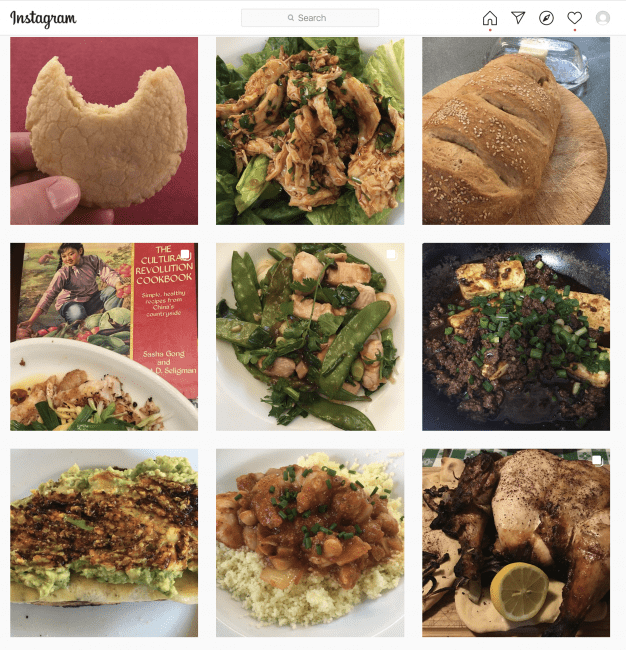
Jane Zimmerman, John and Ruth McGee Director of the Dean Rusk International Studies Program
As rough as the past year has been, I have looked at it as an opportunity to reframe and adapt, and savor every drop of a glass half-full (and at times, a cup that runneth over).
After packing out myself from Davidson, I packed out my son from his college dorm room. We returned to our home in Arlington, Virginia, just outside Washington, D.C., and joined my husband and dog. My son especially loves the Vietnamese, Korean and Chinese cuisine here in northern Virginia, and we wanted to support Asian-owned businesses. However, he and I also love cooking, so we started teaching ourselves how to make some of our favorite dishes. I saw a review of Fuchsia Dunlop’s James Beard Award-winning Every Grain of Rice, so I bought it and began cooking my way through it. Our family explored simple Chinese cooking, experimented with new ingredients using familiar techniques, and experimented with new techniques and familiar ingredients. From hot and numbing beef to smashed cucumber salad, I savored the flavors of China from my own western kitchen. It inspired me to start a new Instagram account, Quarancook. My son, meanwhile, took to YouTube videos, and began making his own hand-pulled noodles from scratch. His summer study abroad to Taiwan, Korea, and Japan was canceled last summer, but homemade ramen and onigiri helped him get a taste of what lies ahead, when we may travel again.
And how could we survive a global pandemic without our pets?! My dog Pepper and I have volunteered as a therapy dog team since 2015. In addition to welcoming students two days a week at Davidson’s Center for Student Health and Well-being, she regularly volunteered in the Washington, D.C., area at George Washington University Hospital, a juvenile detention center, and libraries, schools, and colleges. Like all of us, Pepper went on Zoom, where children learning from home would read to her and other dogs their favorite books. Pepper also has her own Instagram account, Pepper the Therapy Dog.
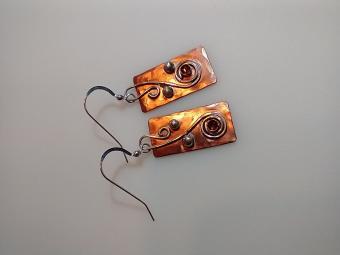
Earrings by Ellen Morrissey
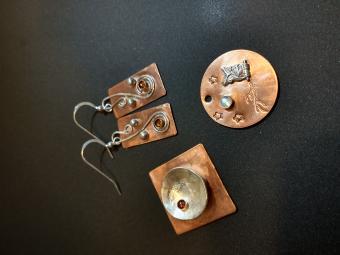
Jewelry by Ellen Morrissey
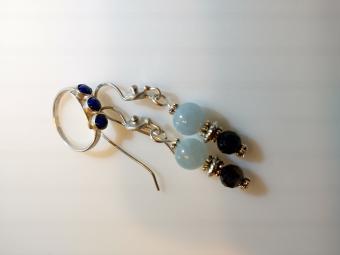
Jewelry by Ellen Morrissey
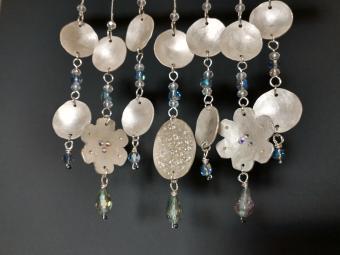
Windchime by Ellen Morrissey
Ellen Morrissey '90, Business Analyst & Database Specialist
During the pandemic, I made it a priority to (with my husband) take a walk every single day at lunch time, unless it was raining. It didn’t take long to realize that I needed that walk in order to end the day in a better place than before.
I also picked up a new hobby/skill: metal-smithing (specifically silver and copper). My dad sent me some beat up old silver coins (that were only worth their value as metal) and asked me to make him something, and it became the start of a new hobby. I’m enjoying soldering, shaping, stamping, and forming silver into jewelry items and into wind-chimes. I’ve sold several pairs of earrings that I’ve made, and I love the process. I can get totally lost in time spending 90 minutes annealing and soldering bits and pieces into new creations.
Before the pandemic, I had a regular at-the-house-everyone-comes-over and brings their own projects art night every Tuesday evening. I switched it over to Zoom immediately, which allowed other friends—who lived too far away to join in person—to participate, too.
And I started offering a weekly free yoga class to my co-workers via Zoom. I also added another evening class for friends and family via Zoom. It’s a great way to connect and to help them build resilience via breath-work and mindful movement.
I found it great to “see” co-workers on Slack and Zoom, in a way that wasn’t accessible before via the phone. I like that part, and hope it continues.
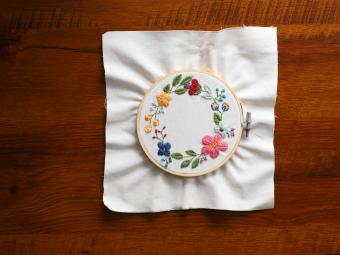
Embroidery by Gaylena Merritt
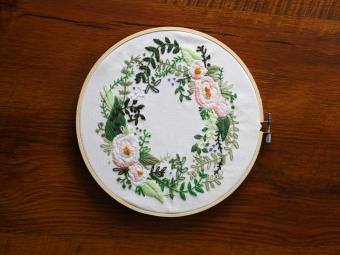
Embroidery by Gaylena Merritt
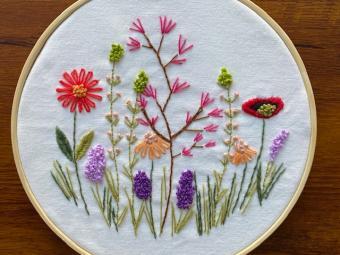
Embroidery by Gaylena Merritt
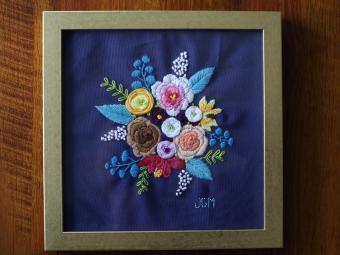
Embroidery by Gaylena Merritt
Gaylena Merritt, Senior Asst. Director for Career Development, Fellowships & Scholarships
When the pandemic started, I tried to remind myself of the importance of having patience and grace for others—and for myself. But when I picked up embroidery as a new socially distanced hobby, I found myself being anything but patient or gracious as I struggled to thread tiny needles and ripped out rows of stitches that weren’t quite right.
Since then, the rhythm of stitching has become soothing, and seeing patterns come to life stitch-by-stitch has affirmed all of the good things that come from slowing down, being patient with a process, and giving myself the space and grace to make mistakes.
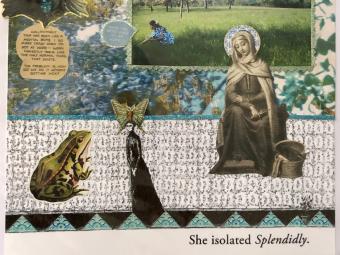
Collage by Maggie McCarthy
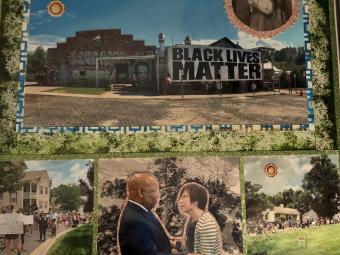
Collage by Maggie McCarthy
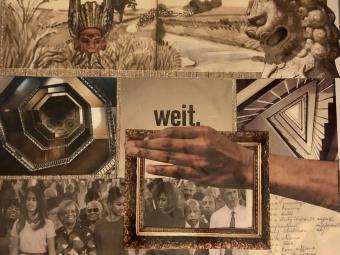
Collage by Maggie McCarthy
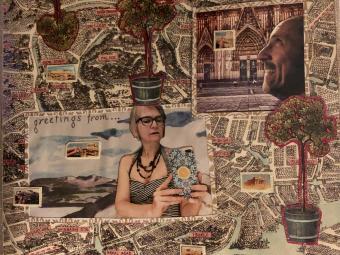
Collage by Maggie McCarthy
Maggie McCarthy, Chair and Professor of German Studies
What really helped me get through the Pandemic was scrapbooking about it. Normally I make a scrapbook about summer travels, and without that last summer I wondered if I should bother. But there was so much interesting, important, and historical print media that I decided to use that, as well as images of artworks I saw early in the year. I was so glad to have a creative project to get me through 2020 and one that let me process everyday life and larger, catastrophic events.
Julia Miller ’21
I started decorating shoes and sold a few [pairs]! Last summer I created Julia’s Doodle Shoes, a one-woman company dedicated to designing and creating custom Doodle Shoes for all shapes and sizes. [editor’s note: Julia wore a pair to graduation.]
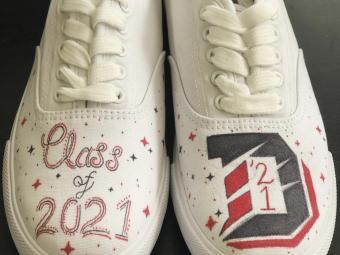
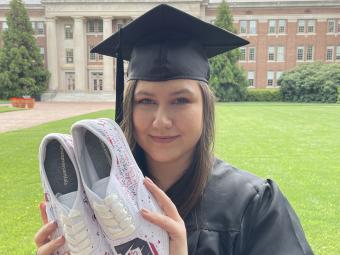
Leila Salisbury ’93
I did two things: 1. Pandemic gardening! I created a seed giveaway with labeled seed packets for annuals, perennials, and vegetables taped to my garage door. Neighbors and people driving by would stop and take things, and it was so much fun to watch (from my living room window) adults and kids make their selections. Many folks later approached me when I was out working in the yard in the summer and fall to tell me about what they’d grown. We grew almost all our own vegetables and I’m just now finishing the last of the homegrown winter squash! It was such a beautiful way to experience both self-sufficiency and community building through a single project.
2. I’m starting a nonprofit to provide peer support and counseling to bereaved children and families. It’s something I’ve wanted to do for a number of years, and the pandemic gave me the space to do countless hours of online education and webinars around bereavement and related mental health issues. It also gave me the time to network with clinical and executive directors of similar centers, as well as key people in my community who should be involved in the project. At first, I was incredibly frustrated by the pandemic and felt like it was slowing down my progress in starting the nonprofit. But I now see that I completely needed this year to learn and connect with people in the field. This
pandemic year was an incredible gift for me personally, and it gave me what I needed professionally to be able to launch this new career.
And really there was a third thing! I got to (very belatedly) be a stay-at-home mom for the first time for my 14-year-old this year. Though she wanted to kill me the first month of the pandemic, we eventually leaned into the “being together all the time” experience, and it transformed our relationship. We now have in-jokes, finish each other’s sentences, and can communicate about anything. She just went back to in-person school, and we both agreed that we will always think of this year out of time as something powerful, magical, and healing for us as a family.
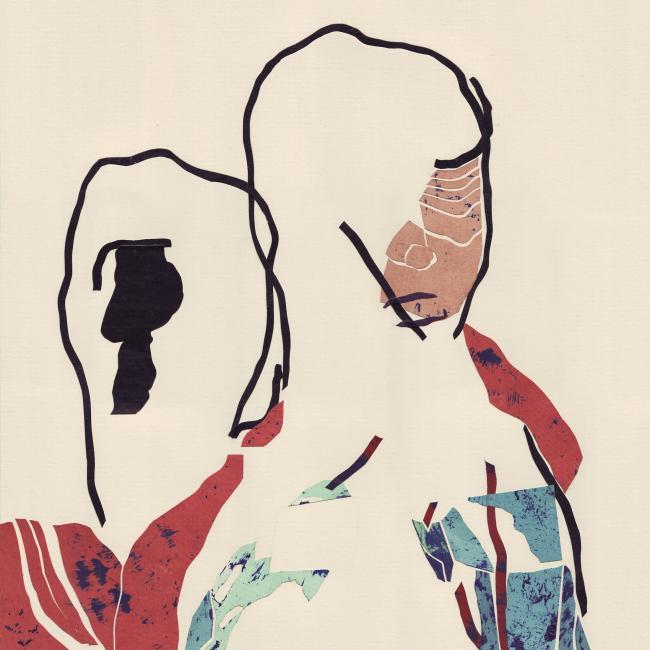
Stray Fossa's album, “With You For Ever”
Nick Evans ’14, Will Evans, Zach Blount ’16, Members of the Indie rock band Stray Fossa
We had tours booked in spring and summer 2020, but once the cancellations started, we had to shift gears along with the rest of the world. Quarantined together, we got to work tracking what would become “With You For Ever” [the band’s recently released album] in our attic.
I am not sure if we had had our sights set on a full-length—certainly not under those circumstances—and the challenge was to stay creative and productive in isolation. Despite being forcibly separated from partners and loved ones (or really because of this), it was a time of reconnection. Conversations were more honest and earnest. I think that maybe for a lot of people early 2020 was a ‘heart-on-your-sleeve’ moment, and much of the album reflects on this and what it meant to the three of us.
Instagram: @strayfossa
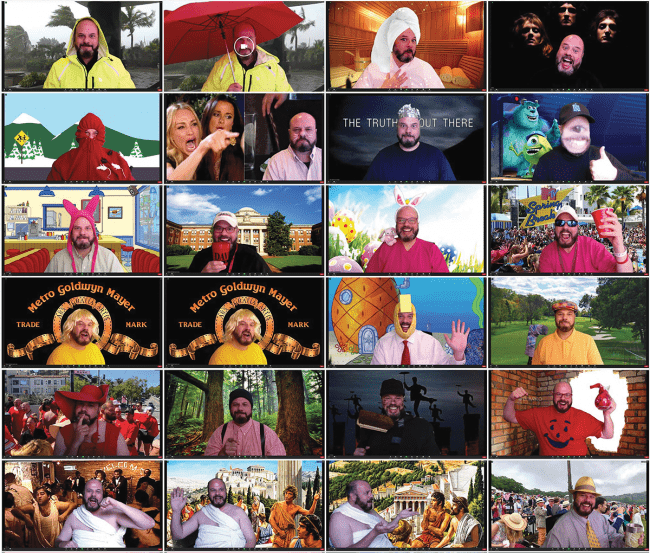
Wilson Hardcastle ’93
When UCSF and the City first went into strict Shelter-In-Place protocols in March of 2020, we thought we would be having staff meetings via Zoom for about three or four weeks. To lighten the mood, even though my kitchen had become my home office, I decided to dress as if I were on vacation for the first department meeting—donning a beach hat, floral shirt, a lei, and zinc oxide. By the next week, we were all rapidly exhausted by being cooped up inside and working/Zooming from home, so I appeared in a bathrobe, wig and curlers. Three weeks in. In the next staff Zoom, I dressed in
full western wear. All outfits had to be sourced from the closet, as we San Franciscans were strictly limited to our homes.
Well, more than 12 months later we are still working and Zooming from home. And I am still coming up with a different look for each week’s meeting. Keeping to the challenge, all looks can be created only from what’s around my apartment.
It’s been a year, and my Zoom meeting statistics are: costumes, 47; pants, 1.
Wildcats Weigh In on Instagram
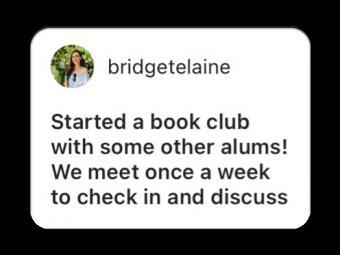
bridgetelaine
Starred a book club with some other alums! We meet once a week to check in and discuss
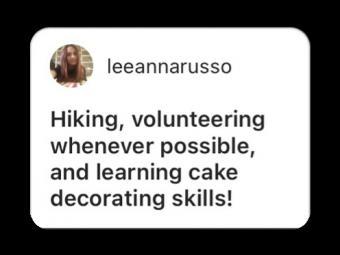
leeannarusso
Hiking, volunteering whenever possible, and learning cake decorating skills!
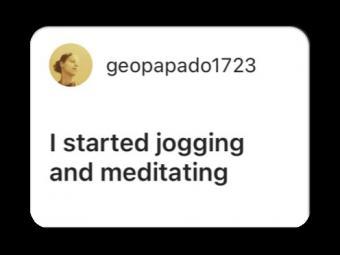
geopapado1723
I started jogging and meditating
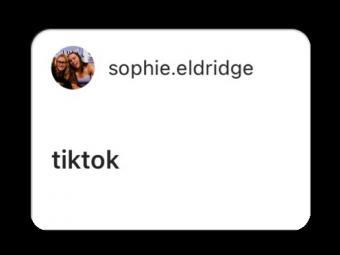
sophie.eldridge
tiktok
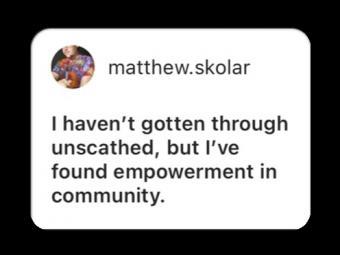
matthew.skolar
I haven't gotten through unscathed, but I've found empowerment in community.
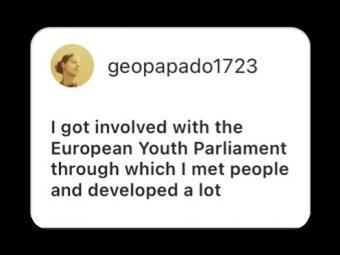
geopapado1723
I got involved with the European Youth Parliament through which I met people and developed a lot

spandananchoori
Lots of cuddles with my puppy, starting TONS of new tv shows and reading books :)
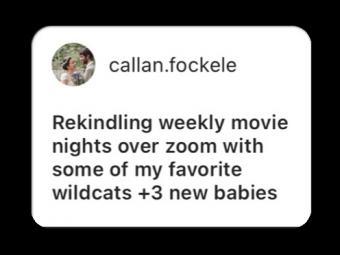
callan.fockele
Rekindling weekly movie nights over zoom with some of my favorite wildcats +3 new babies
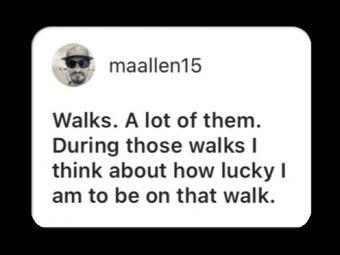
maallen15
Walks. A lot of them. During those walks I think about how lucky I am to be on that walk.
This article was originally published in the Spring/Summer 2021 print issue of the Davidson Journal Magazine; for more, please see the Davidson Journal section of our website.
Published
- June 11, 2021
Category
-
College Relations
-
Davidson Journal Spring/Summer 2021